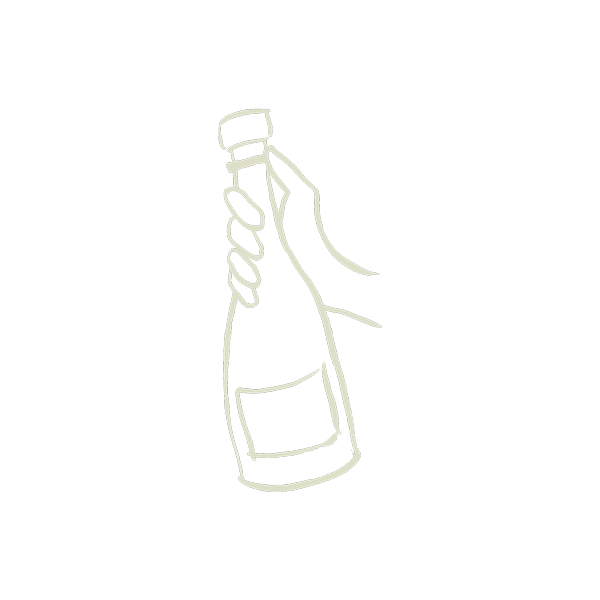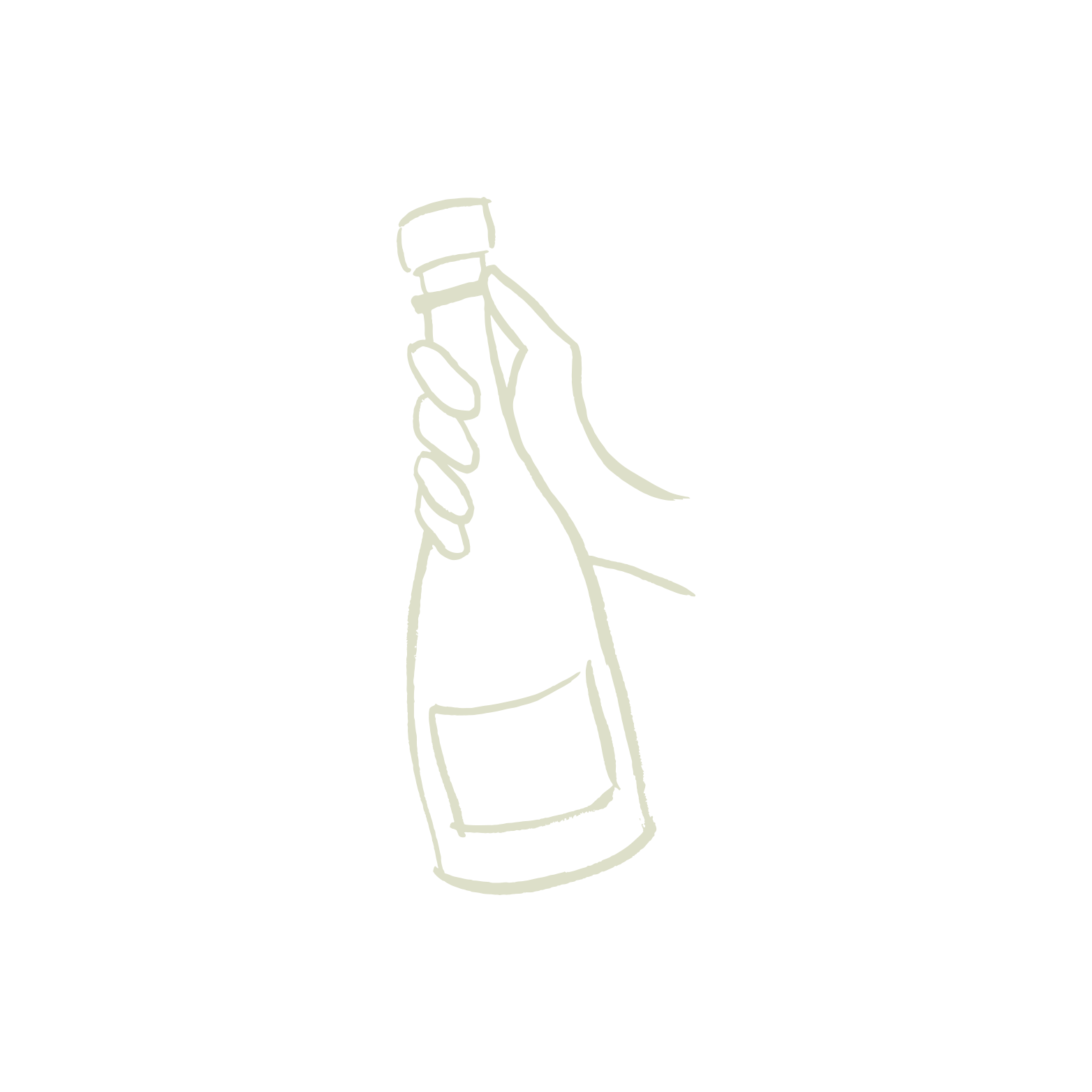The Art of Drinking - How to taste Champagne


From opening the bottle to savoring the last drop, drinking Champagne is a truly sensory experience. We are here today to show you how to use your eyes, nose, palate and imagination to get the most out of your glass. Can you just picture a golden glass of bubbles already? Mmmm. Let’s dive in!

Step 1: Chill your Champagne
Need your bubbles cold quickly? The best thing to do is submerge the bottle in a bath of half ice and half water for about 20 minutes. Yes, more water than you think. Water is a much better thermal conductor than air, and will help transfer the heat from the bottle faster. Sprinkling a generous amount of kosher salt in the ice/water bath will also help to bring down the water’s freezing temperature. #Science.
Pro tip, make sure the bottle is deep enough that the neck too is mostly immersed. You don’t want that first glass to be warmer than the rest!
Otherwise, get your bubbles nice and cold in the fridge for at least 24 hours before serving. Allow your bottle a few moments outside the fridge. By time you open the bottle, pour your glass(es) and cheers, the bubbles will have come up to temperature just in time for your first sip. Champagne is best served at the optimal drinking temperature of 55 degrees—cold but not too cold to taste.
We're not saying drink warm Champagne of course, but don't feel like you need to keep submerging your bottle in ice or keep it in the fridge before you pour another glass. We think it's a beautiful thing to discover all the new aromas and flavors and how the Champagne changes as the bottle continues to come up in temperature.

Step 2: Pop that bottle
When the bottle is sufficiently cold, it’s time to open the bottle. After removing the foil from the top of the bottle, it’s super important to keep your thumb over the top as you unwind the cage in a counter clockwise direction. Some folks like to drape a towel over the top as an extra safety precaution.
Next step doesn’t seem very intuitive at first, but trust us. You don’t just want to tug the cork out or even twist the cork. Hold the cork securely in place with your non-dominant hand, and hold the bottom of the bottle in your dominant hand. Holding the bottle on an angle to equalize the pressure, twist the bottle, not the cork!
As you begin twisting the bottle, you will feel the cork begin to release into your palm. Push the cork back towards the bottle as if you are trying to keep it in. This will control the cork from releasing too quickly. You will begin to hear that sweet sweet squeak, of the bottle naturally pushing the cork out.
Go slow. The slower the cork comes out, the better. Ideally, the cork should gently release into your palm—“Ahhh,” like the sigh of a content woman.
Or forget everything we just said, grab your kitchen knife, and saber the bottle off your back porch. You do you.

Step 3: Smell the cork?
What does a corked bottle smell like? Not good. It smells like stale, wet cardboard and masks the true flavors and aromas of the wine.
The cork is more than just a way to close a bottle. Think of the cork as the nostrils of the bottle. Cork is a porous material that allows the transfer of oxygen, thus allowing the wine to breathe slowly as it matures.
Go ahead and touch the wine facing side of the cork. If it is moist it means that the bottle is not oxidized. If the bottle is much older, the cork tends to be a bit more dry since there has been more time for the bubbles to breathe/evaporate. When it comes to bubbles, it is not always a bad thing. Champagne and age are friends, and oxidation creates all those toasty, nutty notes we all know and love.

Step 4: Pour yourself a glass
Your experience can be totally different depending on the glassware you choose. At fatcork we prefer standard white wine glasses or Burgundy glasses. More on glassware here.
As those gorgeous bubbles begin to tumble from the bottle into the glass, don’t forget to listen. Crackling and fizzling about—the thousand tiny bubbles coming in contact with the air and the sides of the glass, reminds us of the sound of the wind blowing through the leaves of a fall tree.
For tasting we suggest about a 2 oz pour so you have room to swirl and sniff.

Step 5: Take a gander
Looking at your glass of bubbles can also tell you a lot.
You will be looking at the color/hue, intensity and clarity. Holding the glass by the stem, hold your glass against a solid neutral background, like the wall or a piece of white paper. What is the color? Is the Champagne a clear, straw-like, yellow color with green reflections or a rich and deep gold with flecks of orange. Maybe it’s a pale salmon pink or electric fuschia. What are the bubbles doing? Fervently dancing or just chillin’?
Tilting the glass, look for variation between the middle and deepest part of the glass and the most shallow at the rim. Is there a discernible difference? A watery edge can often signify age.
Is your glass brilliantly clear like the sky after it rains or slightly foggy? Slightly murky can mean that there is still some sediment or must floating around. Most of the time, when it comes to bubbles that are disgorged, the Champagne will have very little to no sediment or cloudiness.

Step 6: Swirl your glass and take a whiff or two
Half of the taste is in the smell, and smell is also subjective. There are no right or wrong answers. We at fatcork believe you should swirl your glass like you would any other glass of wine. Give it a whirl! What you may give up in effervescence, you will surely gain in the complexity of aromas.
If you are new to this, be patient and start sniffing everything around you; dusty countertops, flowers, fresh and dried herbs, that fresh loaf of sourdough you brought home from the market, your wife’s leather purse, your grandmother’s blackberry jam. Everything you can get your hands on. Do these smells bring up sensory memories?
Swirl your glass one more time. Then close your eyes to focus on the task at hand. Dip your nose in and breathe deep. Sometimes opening your mouth while breathing in helps capture more aromas. What do you smell?
Do you smell fruit? What kind - fresh, dried, grilled, or stewed? Are there summer berries, citrus, stone fruit or orchard? Is there some kind of earthy note like soil, stone, or trampled leaves? Perhaps something herbaceous like fresh cut grass or floral like daffodils swaying in the breeze? The world is your oyster. These questions can also carry over once you take a sip.

Step 7: Take your first sip and enjoy
It’s finally time for Champagne dans la bouche. Hooray!
First, an opening sonata of bubbles hits your palate, followed by a scherzo of body & structure. Then comes the crescendo of acidity, a delightful fruity melody and a pronounced mineral finish—the first sip, just a mere interlude to the 2nd act. All of these combined characteristics should create a symphony in your mouth; a harmonious ensemble of aromas, flavors, and textures.
Champagne is beautifully complex and all constructs should be seamlessly integrated and proportional to one another.

How does it sit in your mouth? Does it coat your tongue and stick to your cheeks? Is it slippery and weighty? If so, is it fruity or sweet?
Or, does it feel light and crisp—clean like you swallowed ocean water at the beach or just washed down an oyster? If so, is it more tart?
A glass of Champagne can be many things at once or lean harder in one direction than another. It can be big, bold and bready with a kiss of oak and also have beautiful acidity of lemon rind and fruity notes of sliced red apple and baked quince. It can also be light and mineral with sharp acidity yet has soft white florals and notes of marshmallow and cake.

Do you taste the sweetness of pink lady apple or a fresh cut bosc pear, do your cheeks pucker with the sensation of acidity? Or, is this glass of bubbles more fruit forward? Maybe it's all summer berries but also frozen lemon ice.
Does it taste mineral like a licking a piece of chalk or more yeasty like taking a bite of a yellow cake? At first, maybe it starts with apple skin meets a wet stone, followed by a slip-and-slide right into a warm baguette with a slather of butter and a flurry of maldon sea salt. The combinations are endless.
Do these flavors linger in your mouth, or do they dissipate rather quickly? How long does it last? Most importantly do you like it? It would be hard to believe you could meet a Champagne and not like it, but it happens.
Take a lot of sips and savor each one until the glass is gone. Then refill your glass. Tasting Champagne is hard work, so go ahead and pat yourself on the back for a job well done. Now it’s time to tip your glass back and relax.
Learning to taste is a process and finding the words to describe the nuances of any wine takes practice and time. It’s all about taking in the world around you, paying attention to things you smell and taste and how they make you feel.
Happy tasting!
Cheers,
Team fatcork

